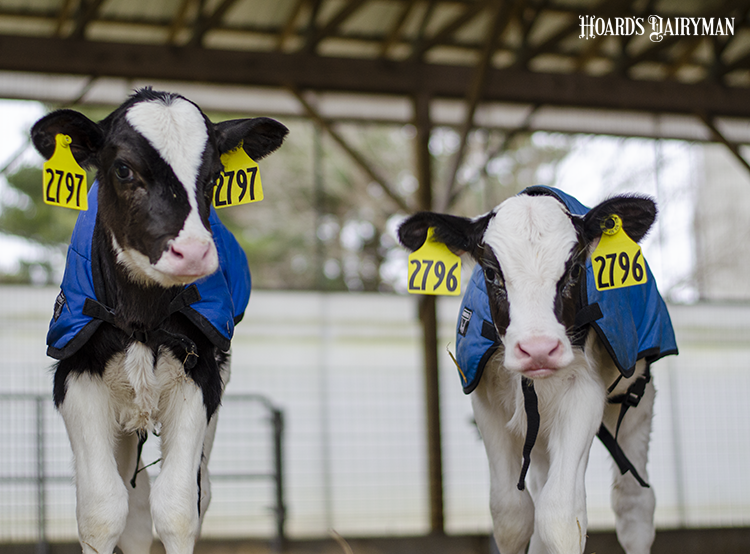
“If you are considering group housing, you have to be really good at everything,” said veterinarian Terri Ollivett during her presentation at the American Association of Bovine Practitioner’s (AABP) annual meeting. She noted that calf care flaws are often exposed when calves are moved indoors and housed in groups.
“Indoor housing exacerbates current weaknesses within the system,” said Ollivett, an assistant professor at the University of Wisconsin-Madison School of Veterinary Medicine. “Indoor group housing exponentially exacerbates those weaknesses.”
Ollivett said the goals for calves in a housing system are clean, dry, warm, and well fed. “We need to build facilities that allow caregivers to be able to do their job and provide that environment for the calf,” she said.
Focusing on ventilation, Ollivett offered some advice for barn design. First, she said to avoid obstructive side walls. “We want air to come in at the level of the calf. We really want to keep that wall low, close to the ground, less than 2 feet. It needs to allow air to come in and go over the calf,” she explained.
She also said to watch out for permanent wind shadows, which can be created by other structures that surround the calf barn. The general recommendation is to keep at least 75 to 100 feet between buildings. “You’re not going to have the best natural ventilation if they are closer,” Ollivett pointed out. She also noted that trees or crops such as corn can create seasonal wind shadows.
While there is not a lot of data available about sidewall curtain management, Ollivet said a general rule of thumb is that when it is less than 40°F, sidewall curtains in calf barns should be closed and the focus should switch to managing eaves and ridge openings. Ollivett mentioned that split curtains are a nice option that provide flexibility to deal with weather issues.
She does prefer that calf barns run a little on the cold side, if calves are fed well, bedded well, and have calf jackets. This would allow farms to keep the curtains open a little longer, bringing in more fresh air.
If calf pens are located along outside wall, Ollivett said to leave 3 feet between the calf pen and the sidewall to help prevent cold stress from drafting.
In barns that have positive pressure tube fans, Ollivett reminded that placement and capacity are important. The goal is to provide four air changes per hour as the minimum winter ventilation rate.
She explained that temporary breaks in the system that last just a day or two can wreak havoc on all the calves in that group for two months or longer. Additionally, Ollivett said, “Abundant vaccinations and metaphalaxis treatments are not the answers.” Instead, proper barn design and disease prevention are needed for successful group housing.








